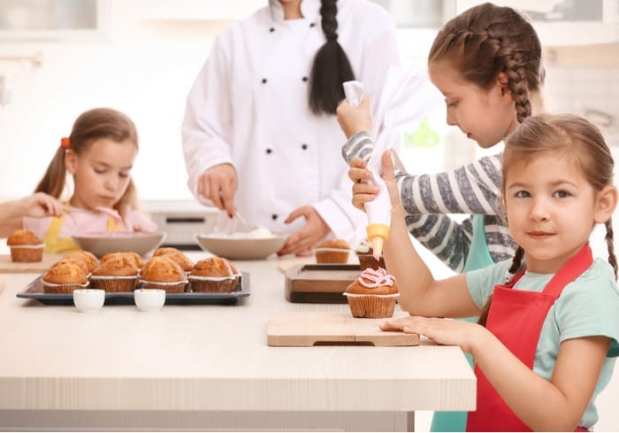When Subscription Boxes Bring Cooking Lessons To Families

Entrepreneurs sometimes spot a need for a service in their own lives before they start their companies: Raddish Founder and CEO Samantha Barnes, for instance, was a middle school teacher and noticed that students would talk about the Food Network and cooking, but they didn’t have an opportunity to apply their skills or study how to cook. She started teaching cooking on the side and added summer camps before realizing there was a real business opportunity in the space. She started the first iteration of the company, Kitchen Kid, and Raddish then emerged.
Raddish is a “cooking club for kids,” Barnes told PYMNTS in an interview. The service is, in some ways, like a magazine with a different theme every month with recipes, activities, a tool of the month and an apron patch. The company, which is very much content-driven, is at the “intersection of food and family and education” and aims to bring them all together, she said. Raddish creates content every month in a subscription kit that is a bit different from, say, a merchant that sells just a box of varying items or supplies from vendors.
The recipes are the heart of the kit, which Barnes said are step-by-step “so kids of all ages and abilities can follow along.” They are also dry erase-enabled so customers can wipe them clean and check them off. And, in each recipe guide, the company weaves in math, science, geography, history or language arts. The aim is to bring in different components to provide for a richer experience. Kids don’t just make Pad Thai with the kit: They might learn about Thai culture, too. The kits have tabletop conversation starters as well as an activity card.
The company has also listened to its customers over the years, and Barnes is proud of being able to hear their needs. One thing the company knows is that kids have different dietary needs, and Barnes pointed out that the kit doesn’t include the ingredients — a decision the company made when Blue Apron was gaining ground. The company also posts dietary substitutions online for, say, families who follow diets that are vegetarian, vegan, dairy-free and gluten-free.
The Boxes
To sign up for the kits, consumers visit the company’s website and select a subscription plan option. It offers monthly, six-month and 12-month memberships. Consumers can pay on a monthly basis, but they can receive a discount if they commit to a six-month or 12-month plan. The company accepts major credit cards for payment, and it offers free shipping in the United States. (It offers international shipping for an additional fee.) At the same time, consumers can cancel their renewals at any time. They can also receive an extra culinary tool and apron patch for siblings for an additional fee, and the memberships can also serve as gifts.
The company’s boxes have different themes, with July’s kit centered around the concept of “Cosmic Cuisines.” The kit helps kids make “planetary pasta salad” and “galactic pancakes,” among other items, while they “build marshmallow constellations and learn about the lunar cycle, astronaut food, the planets, and other space elements,” according to a recent announcement from the company. Barnes said the company is especially excited about the July kit since the month marks the 5oth anniversary of the moon landing. The company also has other themes centered around seasons, creative topics, countries and holidays. (The country themes, in particular, can encourage families to try new foods.)
In addition, Co-Founder and Chief Marketing Officer Seth Barnes noted that cooking is “something that some kids are drawn to, and they’re good at.” Some may grow up to become professionals, but no matter what, Seth pointed out that the activity is a good life skill. He also pointed out that the age range for the kits is ages 4 to 14-plus, and as kids progress they can start to do more of the kits independently. With kids who are 4 years old or even younger, he said, there may need to be a good deal of adult supervision and assistance. When children become 9 or 10 years old, however, many blossom and become more independent and can gain a lot from the supplementary materials in the kits.
With the help of innovative content for a variety of ages, digital disruptors are aiming to help kids and families learn a lifetime of cooking skills through subscription box services in the age of culinary innovation.
